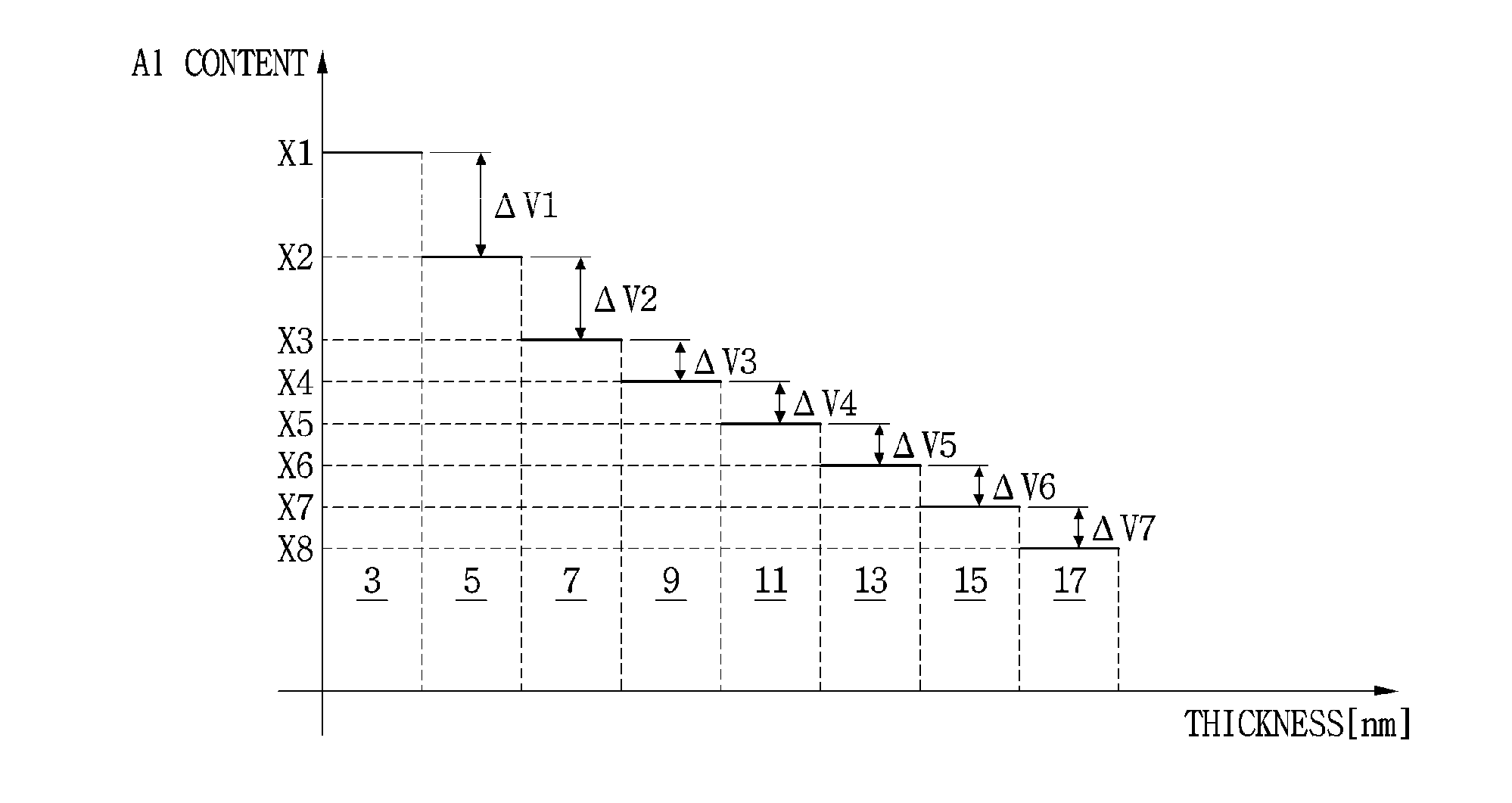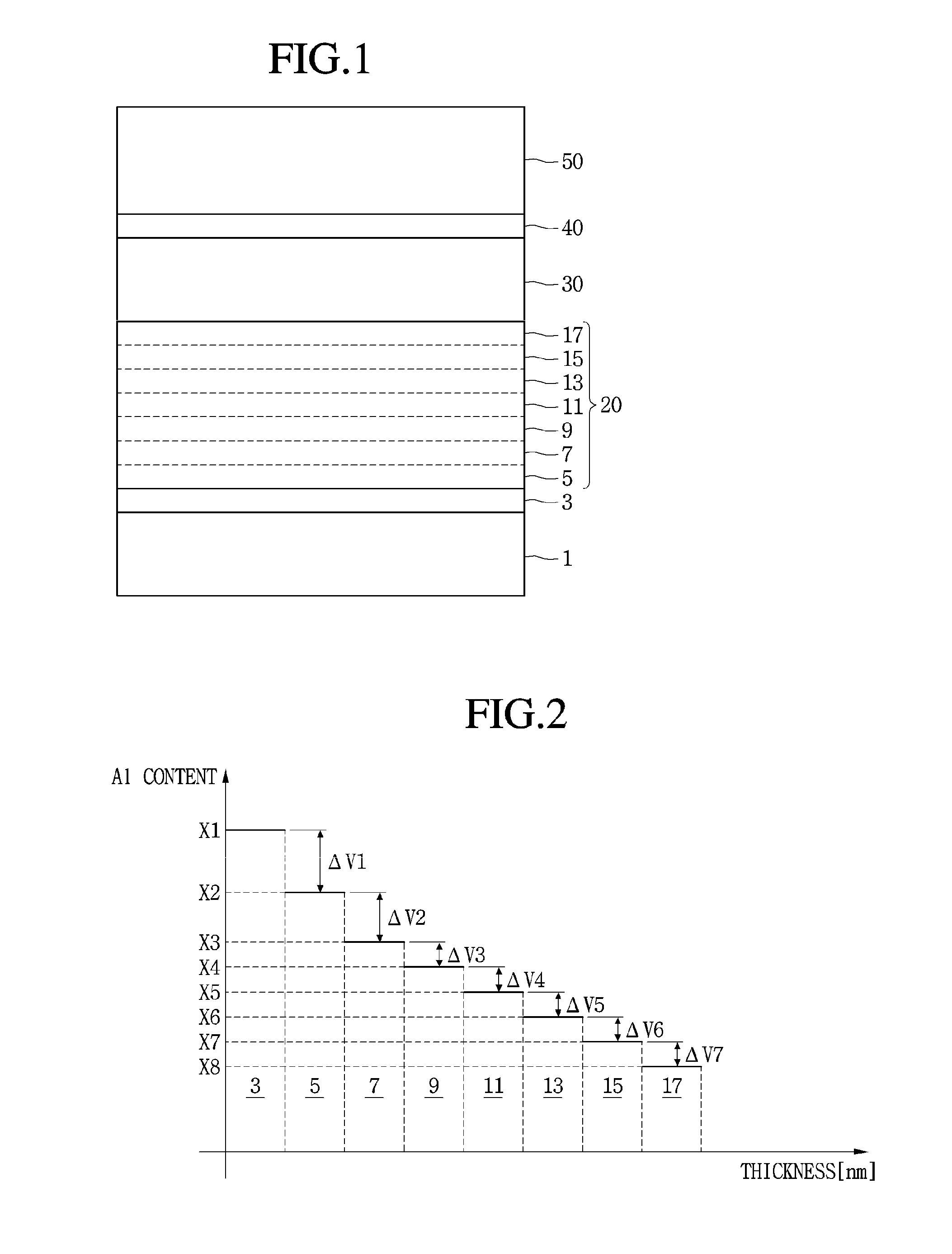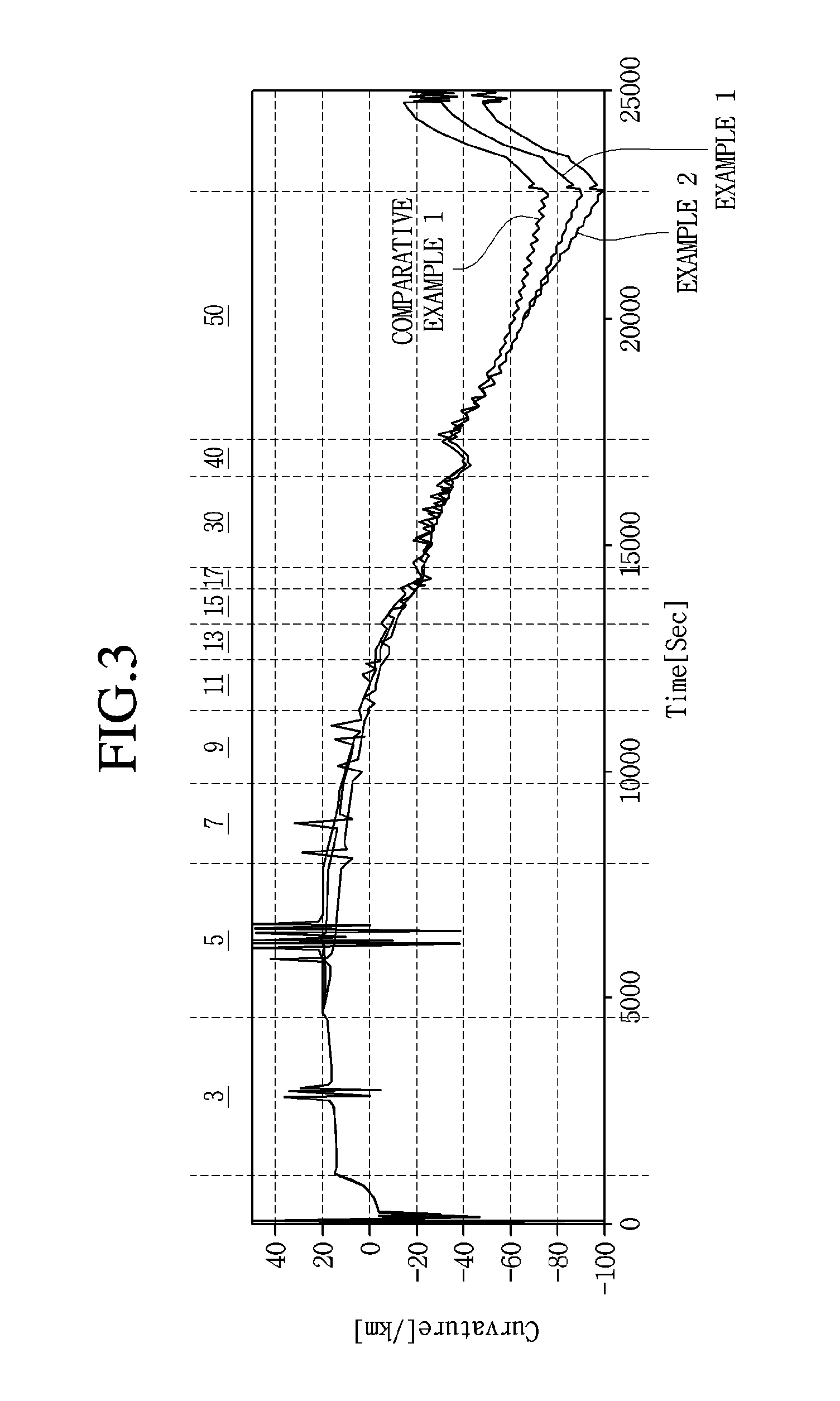Semiconductor substrate
a technology of semiconductor substrate and substrate, which is applied in the manufacture of semiconductor/solid-state devices, semiconductor devices, electrical apparatus, etc., can solve the problems of cracks, reduced crystallinity, and forming of various defects in the compound semiconductor layer, so as to improve crystallinity, improve the crystallinity, and maximize the compressive strain
- Summary
- Abstract
- Description
- Claims
- Application Information
AI Technical Summary
Benefits of technology
Problems solved by technology
Method used
Image
Examples
first embodiment
[0044]FIG. 1 is a cross-sectional view illustrating a semiconductor substrate according to a
[0045]Referring to FIG. 1, the semiconductor substrate according to the first embodiment may include a growth substrate 1, a seed layer 3, a buffer layer 20, a first nitride semiconductor layer 30, a stress control layer 40, and a second nitride semiconductor layer 50.
[0046]The at least one stress control layer 40 may be formed, but the present disclosure is not limited thereto.
[0047]The semiconductor substrate according to the first embodiment may function as a base substrate for preparing an electronic device, such as a solar cell, a photodetector, or a light-emitting device, but the present disclosure is not limited thereto.
[0048]The seed layer 3, the buffer layer 20, the first nitride semiconductor layer 30, the stress control layer 40, and the second nitride semiconductor layer 50 may be formed of Group II-IV and / or Group III-V compound semiconductor materials, but the present disclosure...
second embodiment
[0115]FIG. 9 is a cross-sectional view illustrating a semiconductor substrate according to a
[0116]The second embodiment is substantially similar to the first embodiment except a buffer layer 20 including a plurality of step regions 5, 7, 9, 11, 13, 15, and 17 and a single heterogeneous region 62. Thus, in the following description of the second embodiment, the same reference numerals will be assigned to the same elements having the same shape or function as those of the first embodiment and the details thereof will be omitted.
[0117]Referring to FIG. 9, the semiconductor substrate according to the second embodiment may include a growth substrate 1, a seed layer 3, the buffer layer 20, a first nitride semiconductor layer 30, a stress control layer 40, and a second nitride semiconductor layer 50.
[0118]The buffer layer 20 may include first to seventh step regions 5, 7, 9, 11, 13, 15, and 17 and the heterogeneous region 62. The heterogeneous region 62 may be formed between any one of the...
third embodiment
[0135]FIG. 12 is a cross-sectional view illustrating a semiconductor substrate according to a
[0136]The third embodiment is a modification of the second embodiment in which a plurality of heterogeneous regions 62a, 62b, 62c, 62d, 62e, and 62f is disposed between first to seventh step regions 5, 7, 9, 11, 13, 15, and 17. The description below will be briefly given, and any details not described herein will be easily understood from the first and second embodiments.
[0137]Referring to FIG. 12, the semiconductor substrate according to the third embodiment may include a growth substrate 1, a seed layer 3, a buffer layer 20, a first nitride semiconductor layer 30, a stress control layer 40, and a second nitride semiconductor layer 50.
[0138]The buffer layer 20 may include the first to seventh step regions 5, 7, 9, 11, 13, 15, and 17 and the first to sixth heterogeneous regions 62a, 62b, 62c, 62d, 62e, and 62f formed between the first to seventh step regions 5, 7, 9, 11, 13, 15, and 17.
[0139...
PUM
 Login to View More
Login to View More Abstract
Description
Claims
Application Information
 Login to View More
Login to View More - R&D
- Intellectual Property
- Life Sciences
- Materials
- Tech Scout
- Unparalleled Data Quality
- Higher Quality Content
- 60% Fewer Hallucinations
Browse by: Latest US Patents, China's latest patents, Technical Efficacy Thesaurus, Application Domain, Technology Topic, Popular Technical Reports.
© 2025 PatSnap. All rights reserved.Legal|Privacy policy|Modern Slavery Act Transparency Statement|Sitemap|About US| Contact US: help@patsnap.com



